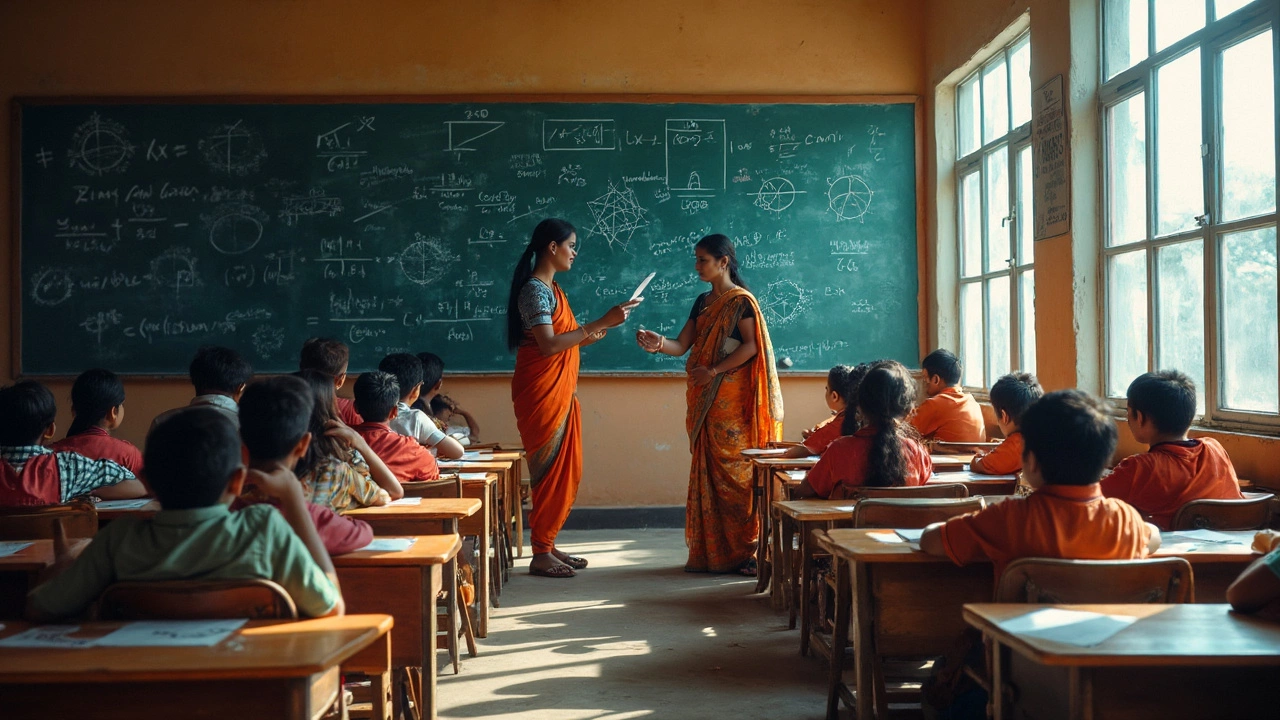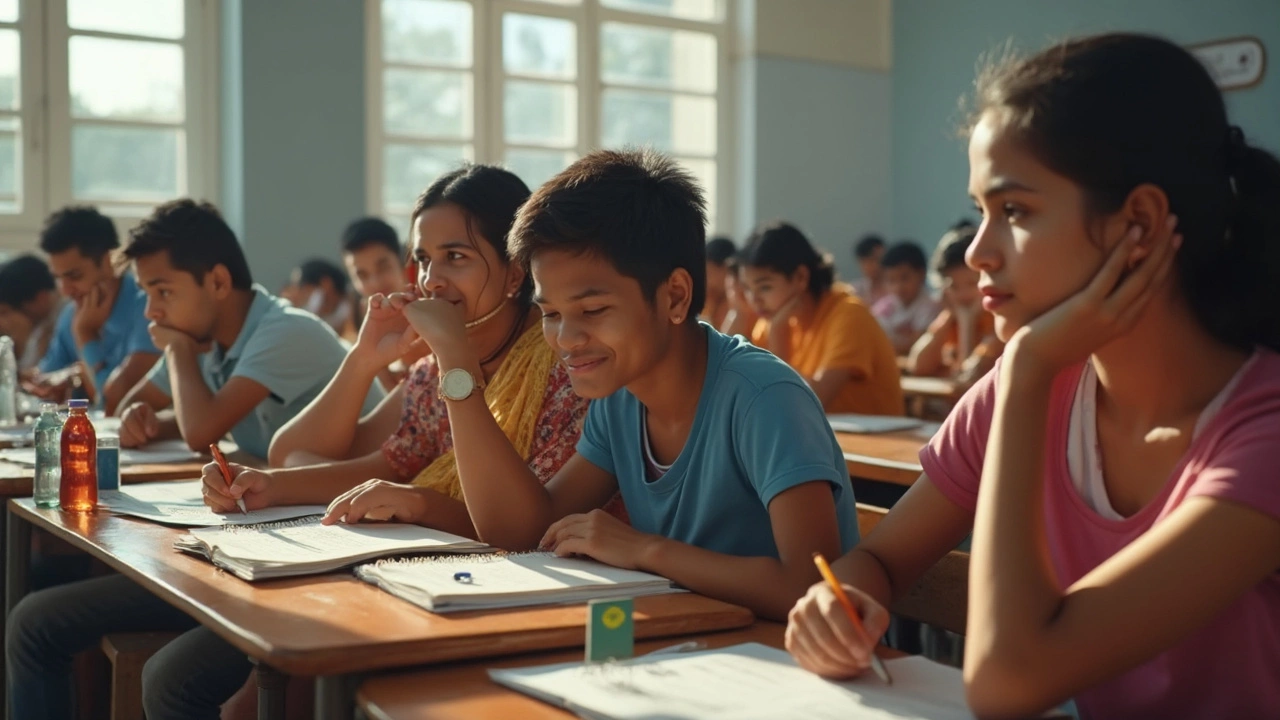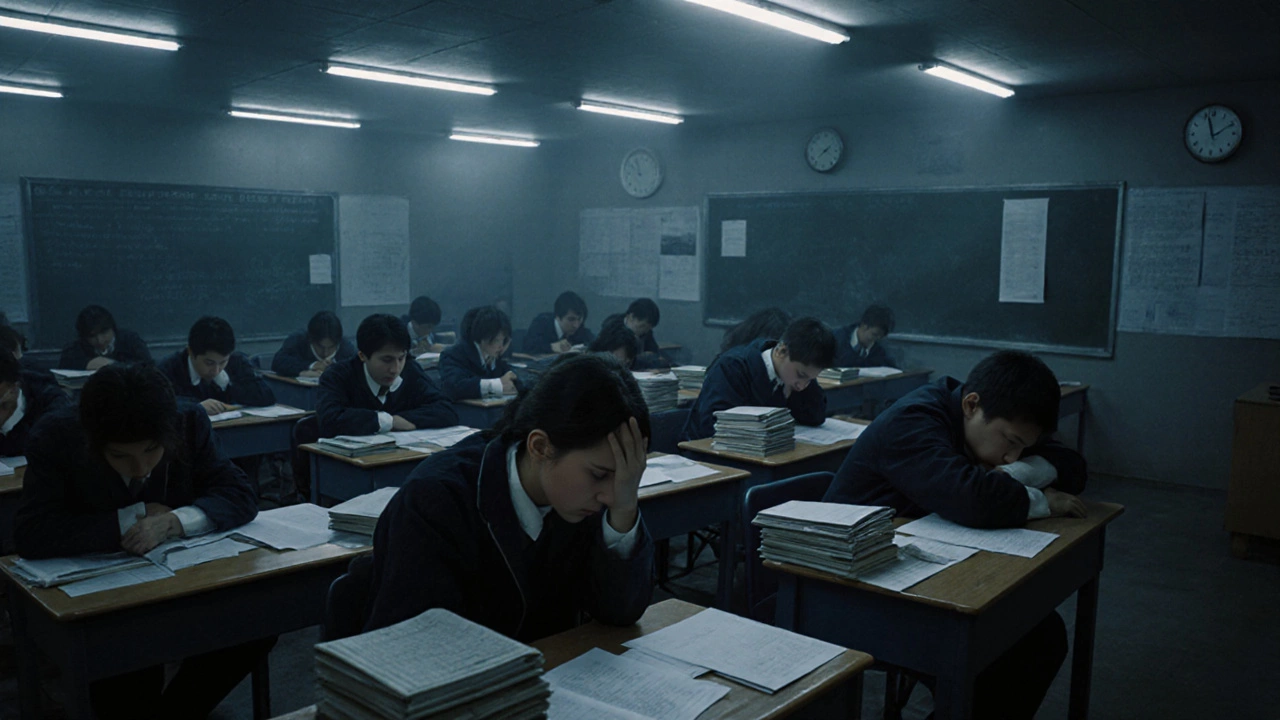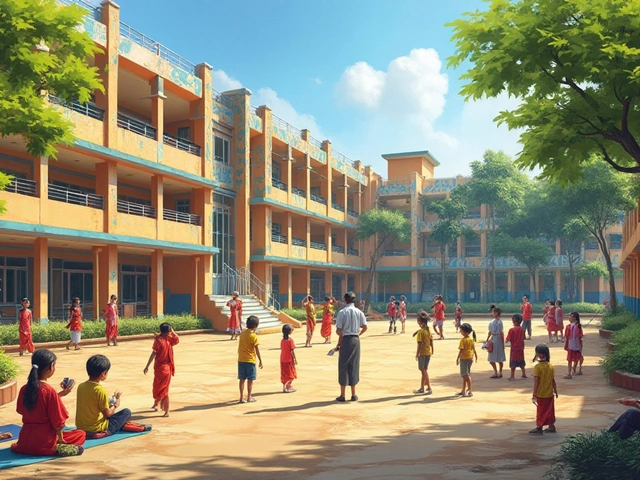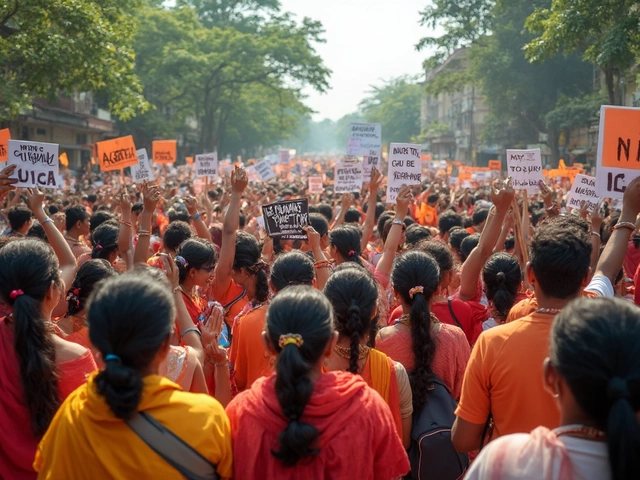Ever stared at a math problem that made your brain hurt and wondered if kids somewhere else are getting even crazier stuff to solve? You’re not alone. Competitive math is a beast, and some countries just love turning up the heat.
If you dig into the world’s toughest math competitions, things get real fast. From China’s mind-bending national exams to Russia’s legendary problem sets, it’s not just about knowing formulas—it’s about inventing wild new ways to get to an answer. Some students memorize tricks, while others learn to think outside every box in the room.
So, where does math get the hardest? The answer’s not as clear-cut as you’d think. Different countries design their exams with totally different goals. Some focus on pure logic, others on calculation speed, and a few just want to see how creative you can get with a simple number. The real kicker? The hardest questions sometimes look dead simple—until you get stuck halfway through and realize you’re in over your head.
- What Makes Math Exams Tough?
- Global Heavyweights: China, Russia, and Beyond
- The US Approach: APs, SATs, and Math Olympiad
- Crazy Questions: Examples That Stump Even the Best
- How to Prepare: Tips from Top Performers
What Makes Math Exams Tough?
If you think all math tests are created equal, take a look at international hardest math contests. There’s a world of difference between doing textbook algebra in class and trying to crack a problem that’s stumped national champions. But what actually separates a regular test from a legendarily tough one?
The first thing: it’s not just about cranking out calculations. In the toughest competitive exams, you’ll hit problems that force you to put pieces together in a totally new way. Take the International Mathematical Olympiad (IMO), for example. Questions never look like what you’re used to. Most of them are meant to be solved using a combo of deep insight, pattern-spotting skills, and some creative leaps that just aren’t covered in most school books. No answer banks, no shortcuts. Even top students can blank out.
Here’s what usually boosts the difficulty:
- Novel problems: No plug-and-play here. Many questions are custom-built so you can’t just rely on memorized steps.
- Time pressure: Even if you know what to do, working under tight time limits with nerves rattling can make simple mistakes costly.
- Abstract thinking: You’re pushed to go beyond calculations and think conceptually—sometimes inventing your own proof techniques on the fly.
- Layered puzzles: Some problems nest several ideas in one. You solve one part, only to realize there’s a whole other twist hiding inside.
Want some numbers to put things in perspective? At the IMO, even the best competitors in the world often solve just two or three out of six questions in the entire event. These aren’t long lists of tiny questions—sometimes it’s just six, each one tough enough to fill a math textbook chapter by itself.
| Exam | Typical Correct Answers (Top 10%) | Total Questions |
|---|---|---|
| IMO | 2-3 | 6 |
| China National Olympiad | 3-4 | 6 |
| U.S. Math Olympiad | 2-3 | 6 |
If you’re hunting for the hardest math around, start here. These contests are more about pushing the limit than checking boxes on a curriculum.
Global Heavyweights: China, Russia, and Beyond
If you want to find the toughest math exams on the planet, China and Russia always come up. These countries have a super intense approach to competitive math, and it shows in the results. Just look at the International Mathematical Olympiad (IMO) leaderboards—China has taken first place over 20 times since 1989. Russia (and before that, the Soviet Union) is almost always right up there too.
China’s high school math curriculum includes things most folks in other countries don’t see until college. Students are drilled on creative problem solving from a young age, with national contests like the Chinese Mathematical Olympiad (CMO) notorious for their ultra-tough questions. Many top scorers attend hardcore math boot camps, sometimes clocking 10-15 hours of training a week.
Russia’s tradition is legendary as well. The country runs a network of math circles—sort of like clubs where kids and coaches tackle wildly hard problems together. They love deep, abstract problems, especially geometry and proofs, the kind that push you to devise your own new solutions. Russia’s national contests, like the All-Russian Mathematical Olympiad, aren’t just about quick calculations—they focus on advanced logic and creative thinking.
Other heavy hitters include South Korea, Iran, and Hungary. South Korea puts students through grueling prep for contests like the Korean Mathematical Olympiad, while Hungary’s famous KöMaL journal shares monthly brain-melters that have stumped even adults.
To get a feel for how dominant these nations are, check out these competitive exams stats from the past decade:
| Country | IMO 1st Place Finishes (2015-2024) | Avg. Medal Count per Year |
|---|---|---|
| China | 7 | 5.5 |
| Russia | 2 | 4.7 |
| South Korea | 1 | 4.3 |
| USA | 2 | 5.4 |
If you’re aiming for the most intense math challenges worldwide, these are the countries to watch. What sets them apart isn’t just skill. It’s the culture they’ve built around loving, training, and, honestly, respecting really hard math.

The US Approach: APs, SATs, and Math Olympiad
Most American students first meet competitive math through standardized tests—think SAT Math and the ACT. These tests are key for college admissions, so they stick to the basics, mostly covering algebra, geometry, and a bit of statistics. You won’t find the world's hardest math here, but you do need speed and accuracy. The College Board’s SAT, for example, has two Math sections that total 80 minutes, and missing a simple question can hurt your chances at a top school.
Then you have AP Calculus and AP Statistics. The Advanced Placement program tosses in some calculus, but most AP questions stick with standard textbook problems. Here’s the thing: only about 20% of AP Calc BC test takers score a perfect 5 every year, so while the questions seem straightforward, the grading scale is tight.
But if you want real competition, look at the American Mathematics Competitions (AMC), then the AIME (American Invitational Mathematics Exam), and finally, the USAMO (United States of America Mathematical Olympiad). Here’s where the competitive exams scene gets wild. The AMC is like a filter—over 300,000 students take this test, but only a few thousand move on to AIME. Then it narrows down again for the USAMO. Less than 300 make it that far.
- AMC: 25 questions, 75 minutes. Some questions are doable, but others can take ages if you don’t spot the trick.
- AIME: 15 questions, 3 hours. Here, the problems get more creative—you need abstract thinking, not just quick math facts.
- USAMO: 6 problems, 9 hours over 2 days. Most students won’t fully solve even half of them.
Want a feel for how tough this gets? Here’s a simplified reality: The USAMO might ask you to prove something that would leave most math teachers scratching their heads. Quick example—"Prove that for all integers x, there’s another integer y so that x + y and x*y are both perfect squares." Not your average worksheet stuff.
Let’s break down some data on performance at each stage:
| Test | # Test Takers | % Advance |
|---|---|---|
| AMC | 300,000+ | ~5% to AIME |
| AIME | ~15,000 | ~2% to USAMO |
| USAMO | <300 | - |
If you’re gunning for the top, check out past AMC and AIME questions—they’re free online, with tons of solutions. Practice is king in these competitions, but so is learning to enjoy creative thinking. That’s the American way: your math can be as hard or as easy as you want—it all depends on how far you’re willing to push.
Crazy Questions: Examples That Stump Even the Best
Let’s talk real-deal, hair-pulling problems you’ll find at the heart of the hardest math competitions. The stuff in some countries’ exams would make even seasoned mathletes sweat. Not exaggerating—a few questions from China’s entrance exams or the International Math Olympiad (IMO) go viral every year just because regular folks can’t even figure out where to start.
Take China’s Gaokao, often called the “toughest exam on the planet.” One infamous 2019 calculus question asked students to analyze the movement of a sliding block—complete with physics and trigonometry mixed together. It was so tough, even Chinese news sites broke it down step by step, and still, tons of top students missed it.
In Russia, things don’t get any easier. Their national Olympiads have tricky geometry problems that seem normal at first, but then ask for proof in five different ways. The Russian habit of making you solve in multiple creative ways has stumped many international competitors. One problem they love to toss in is something like: prove that for any triangle, a certain relationship holds with its angle bisectors—sounds easy, but takes layers of thinking and usually more than one page to show.
The IMO is notorious for dropping bombs like this:
- "Let n > 1 be an integer. Prove that there exist n consecutive positive integers none of which is a power of a prime." (Most high schoolers see this and freeze.)
- “Determine all functions f such that f(x + y) = f(x) + f(y) and f(1) = 2.” (You need to know more than basic algebra here.)
Here’s a quick snapshot of recent toughies:
| Competition | Year | Type of Problem |
|---|---|---|
| China Gaokao | 2019 | Integrated Physics & Calculus |
| Russian Olympiad | 2023 | Multi-step Geometry |
| International Math Olympiad | 2022 | Advanced Number Theory |
What makes these competitive exams so brutal isn’t always the level of math, but how much thinking outside the box you’re forced to do. There is rarely a direct formula—you need to break the problem apart, sometimes invent a strategy on the spot, and not panic when your usual bag of tricks fails.
Here’s a tip if you want to crack one of these monsters: practice with old Olympiad and national exam problems, not just standard textbooks. If you get stuck, work backward from solutions—this turns each problem into a mini-lesson on creative thinking.
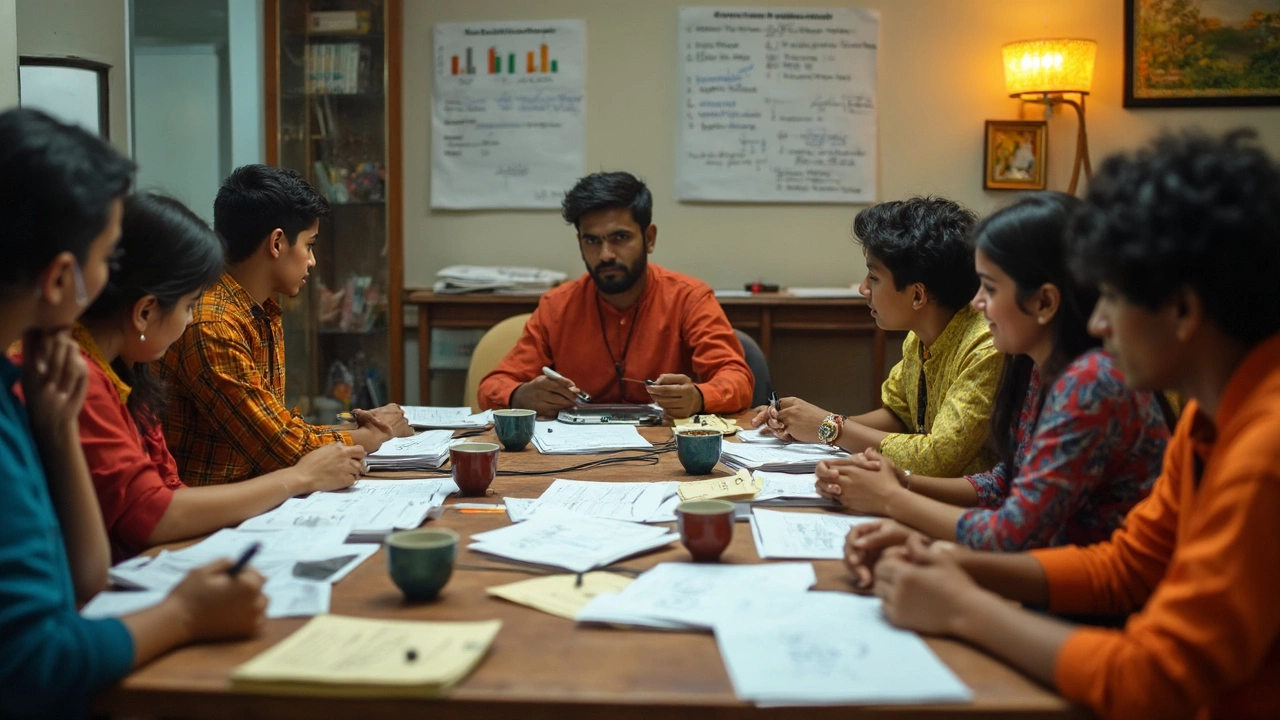
How to Prepare: Tips from Top Performers
If you want to handle the hardest math on competitive exams and not get wrecked by some sneaky geometry or algebra twist, you’ll need a plan. Turns out, top scorers don’t rely on pure talent. They work smart and stick to a game plan.
First off, these folks hit the basics until they’re second nature. It’s not just about tough questions—if your foundational skills are shaky, those hard problems turn pretty much impossible. In China, for example, students train with insane repetition on core topics before moving to advanced problems. Same thing at Russian math schools—everyone knows their basic moves before they get creative.
- Practice with purpose: Grab old math olympiad papers, like the International Mathematical Olympiad (IMO) archive, or check out problem sets from national contests. Take it slow at first. It’s about learning how top problems tick, not speed-solving everything.
- Understand solutions inside out: Don't just check answers—dig into the logic. Top performers rewrite solutions in their own words and spot patterns between different types of problems. If you see a trick once, chances are it pops up again.
- Ask for help: Join online forums like Art of Problem Solving or find local study groups. Even top kids get stuck and talk it out with friends or mentors.
- Mix problem types: Don’t just crunch algebra if geometry makes you sweat. Rotate through topics so you don’t freeze up on test day.
- Mock exams matter: Time yourself with real test conditions. Many winners swear by weekly timed sessions, which builds both speed and nerve.
Want stats? In the US, most top performers on the American Mathematics Competitions (AMC) practice at least 5 hours a week for months before the test. Chinese math Olympiad teams often do 3+ hours a day, mixing practice problems and mock exams.
| Country | Weekly Prep Hours | Common Resource |
|---|---|---|
| China | 21+ | Training Camps, Olympiad Problem Books |
| Russia | 15-20 | Math Circles, Russian Problem Sets |
| US | 5-12 | Art of Problem Solving, AMC Archives |
Bottom line: if you want to slay those crazy competitive exams, don’t count on shortcuts. Build your base, train smart, and don’t be shy about hunting down problems you can’t yet solve. The kids who win aren’t the ones who never get stuck—they’re the ones who push through anyway.
